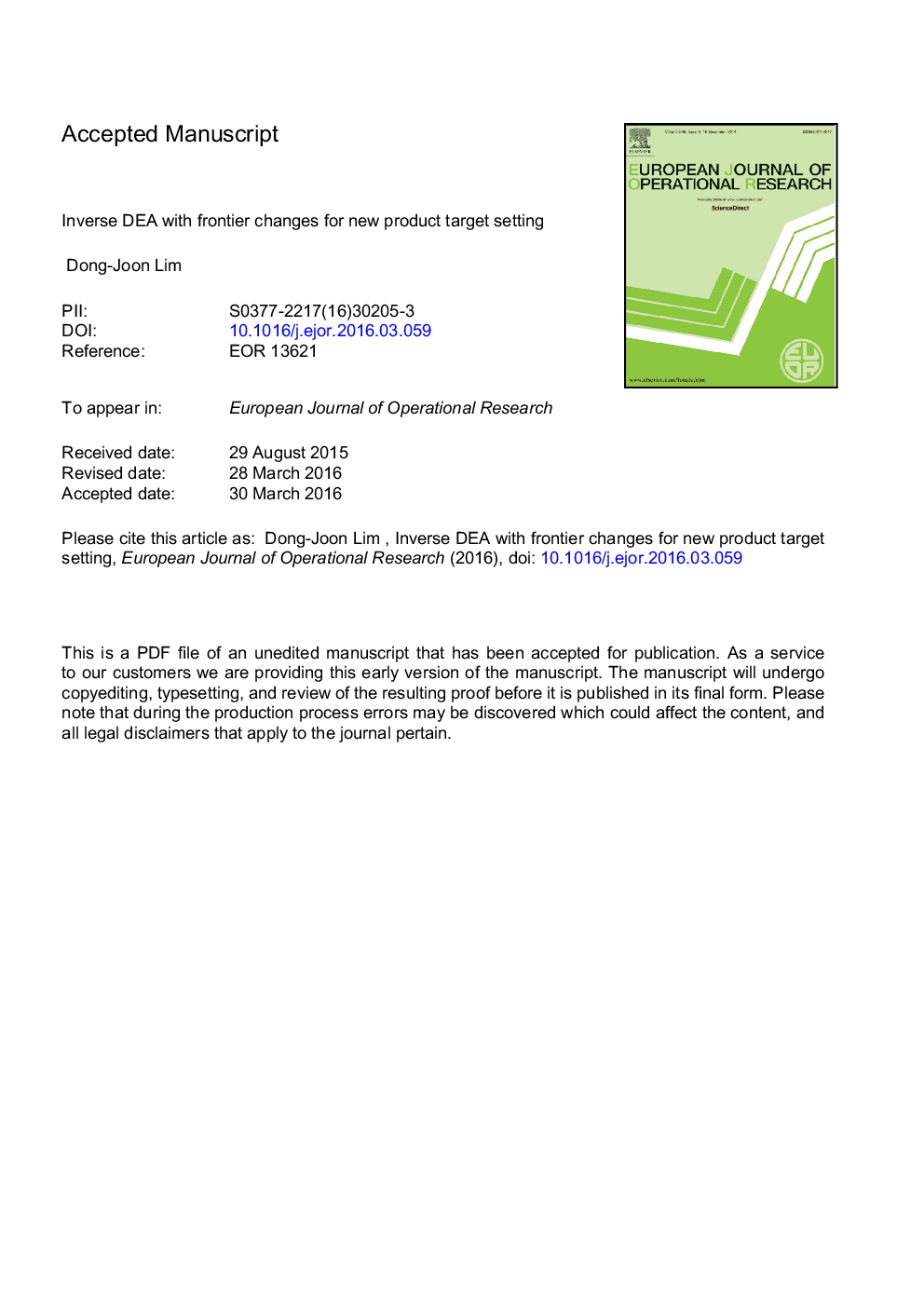| Article ID | Journal | Published Year | Pages | File Type |
|---|---|---|---|---|
| 6895428 | European Journal of Operational Research | 2016 | 25 Pages |
Abstract
Inverse data envelopment analysis (DEA) is a reversed optimization problem that can serve as a useful planning tool for managerial decisions by providing information such as how much resources (or outcomes) should be invested (or produced) to achieve a desired level of competitiveness whereas the conventional DEA focuses mainly on a post-hoc assessment of the organizational performance. Inverse DEA studies however are based on an assumption that the efficiency level of observed decision making units (DMUs) will not change within the period of interest, which in fact confines the use of inverse DEA to a sensitivity analysis by simply addressing what alternative levels of input and/or output would have been possible to result in the same efficiency score obtained. In this paper, we discuss an inverse DEA problem considering expected changes of the production frontier in the future by integrating the inverse optimization problem with a time series application of DEA so that it can be an ex-ante decision support tool for the new product target setting practices. We use an example of the vehicle engine development case to demonstrate the proposed method.
Related Topics
Physical Sciences and Engineering
Computer Science
Computer Science (General)
Authors
Dong-Joon Lim,
